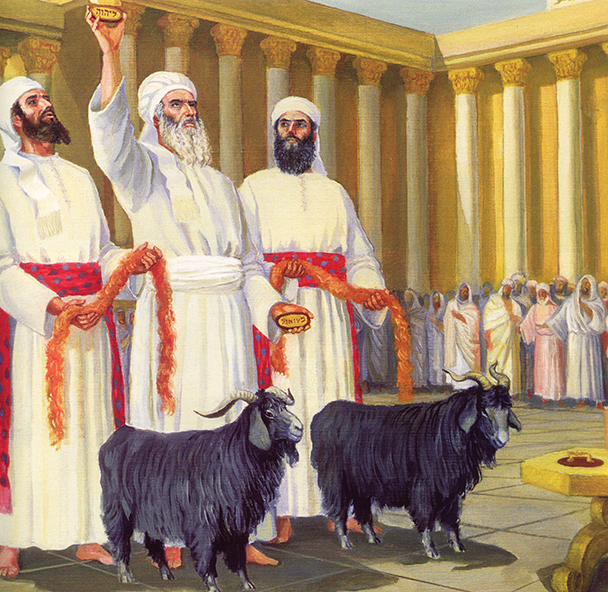In his book, “Fooled by Randomness: The Hidden Role of Chance in Life and in the Markets,” Nissim Taleb argues that the human brain abhors randomness. Our brain is hard-wired to see patterns everywhere. We need to make sense of our surroundings and events around us. Sometimes, the ability to discern a pattern is very useful, but other times, we simply fool ourselves into seeing a pattern where there is none. We just can’t deal with randomness. Perhaps, this is one of the reasons why quantum physics—random at its core—is so hard to understand. It is difficult for us to accept that at the core of our reality, there is nothing but randomness. Even Einstein, himself one of the founding fathers of quantum physics, could not accept it. He famously said to Neils Bohr, “G‑d does not play dice!” To which Bohr retorted, “Quit telling G‑d what to do!”
I don’t know if G‑d plays dice, but I know, He instructed us to do just that. On the holiest of Jewish holidays, Yom Kippur, we read about two goats and casting lots—the central ceremony of Avoda—the Service at the Bet HaMikdash (Jerusalem Temple) performed by the Kohen Gadol (the High Priest). Moreover, the very name of Yom Kippur can be translated as the “Day of the Lot.”
The Baal Shem Tov said that everything is a manifestation of hashgaha pratit—Divine Providence in every detail. Even a leaf falling off the tree falls on one side or the other according to the specific will of G‑d. This worldview seems to leave no room for randomness. And yet, on Yom Kippur, we celebrate randomness. A paradox? Not quite.
The explanation can be simple. There are two things that stand in the way of hashgaha pratit—Divine Providence—objective laws of nature and subjective human free choice. Laws of nature prescribe an object how to behave in a predictable fashion leaving little room for the manifestation of Divine providence. Likewise, subjective human choice leaves little room for Divine providence either. When asked, “Where is G‑d?” the Kotzker Rebbe said, “He is wherever you let Him!” To see the hand of G‑d, one needs to step aside and let G‑d in, as it were.
To let Divine providence manifest in this world, we must “neutralize” the laws of nature (by equalizing them) and remove the subjective factor—our free will. A lottery does both. Made properly, a fair die has an equal probability of falling on any of its sides. Similarly, there is no law of physics that would influence the casting of a lot. Using any random number generator “neutralizes” the laws of physics, which allows for equally probable outcomes. Likewise, a lottery takes away the human factor.
This is the story of two goats and two lots. Relying on a random choice, the Kohen Gadol (the High Priest) opens the door for Divine providence; he invites G‑d to speak through a lottery.
In the Torah, the Yom Kippur Holiday is called Yom HaKipurim. Purim is the plural form of pur (“lot”), meaning “lots.” The Torah specifically refers to two lots:
And Aaron shall place lots upon the two he-goats: one lot “For the Lord,” and the other lot, “For Azazel.”
Leviticus 16:8
Perhaps these two lots hint at the two factors that stand in the way of Divine providence—laws of nature and our free will—and the mechanism to neutralize them. Hence, the name Yom HaKipurim, in plural.
The Zohar states that Yom HaKipurim should be translated as “a Day like Purim.” Indeed, on Purim—another Jewish holiday—two lots were cast. On that day, we were saved by the lots just as on Yom Kippur, when through lots, we used to obtain Divine forgiveness.
Some people may be fooled by randomness but, when we realize that randomness opens the door to the Divine, we are saved by randomness. It is for this reason that two days a year—on Purim and on Yom HaKippurim (which is a Day like Purim)—we read about two lots and we celebrate randomness.


Leave A Comment